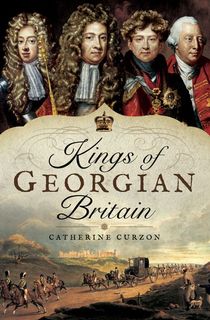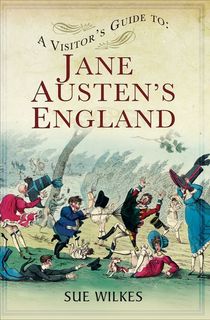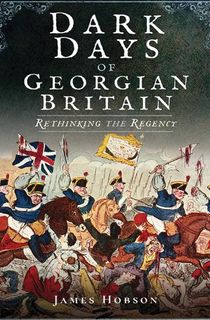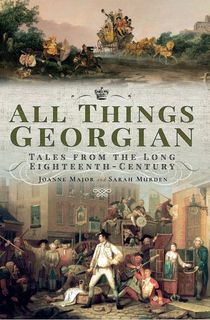The Georgian Era was a shift from rational to the romantic, a century of social and religious evolution in the British Empire that paved the way to the iconic, modernizing culture of the Victorian Era. The epoch saw Enlightenment movements strike on both sides of the Atlantic, political and social reform, monumental works of art and literature, and the world’s first industrialized country, all in the midst of conflicts against British rivals such as George Washington and Napoleon Bonaparte.
Related: Behind the Crown: 12 First-Class Books About Royalty
The Georgian Era began with the coronation of George I in 1714 after the death of George’s second cousin Queen Anne, seven years after the kingdoms of England and Scotland merged to form Great Britain. This was not a smooth transition of power; Queen Anne’s death with no surviving children meant that a Hanoverian was placed on the throne, one who barely spoke English who faced an almost immediate Jacobite rebellion that wished to restore the Stuarts back on the British throne.
It took three decades until the final Jacobite uprising was squashed, and by then George I had been dead for nearly twenty years, succeeded by his son George II. After George II’s death in 1760, his successor George III marked a return to English-born, native English-speaking monarchs to Britain as he oversaw a lengthy reign that brought highs and lows to his domain.
George III’s declining mental health led to a Prince-Regency by his son, from 1811 to George III’s death in 1820, but some historians define the entire period from 1795 to the end of the Georgian Era in 1837 as the “Regency Era”, characterized by developments in art, literature, and architecture as much as who sat on the throne.

Dancing Milkmaids, Francis Hayman, 1735.
Photo Credit: Wikimedia CommonsA key characteristic of Georgian Britain was its transition away from the more rationalist Restoration era into a flourishing period for arts and high culture, particularly in the Regency.
The era was popularized and defined, during and since, by the writings of Jane Austen, whose romantic novels such as Pride & Prejudice and Emma are as lauded today for their depiction of Georgian society as they were during the Regency.
Related: This Astonishing Book Makes Jane Austen’s World Come to Life
Books such as A Visitor's Guide to Jane Austen's England by Sue Wilkes and Dr. Johnson’s London by Liza Picard further illustrated the day-to-day life of the cultural and technological explosion of the late 18th century.
Poetry went through a golden age, with the rise of Romanticists such as Percy Shelley, Lord Byron, William Blake, and John Keats; Shelley’s wife Mary wrote one of the first and finest science fiction and horror stories in Frankenstein; the music of Beethoven, Bach, and Mozart made its way over from the continent. The standard of food and fashion skyrocketed, the latter bringing an acceptance toward informal and practical dress, and a “New Gothic” architectural movement developed.
The era also saw social, political, economic, and religious reform. Superior crop rotation techniques and agricultural technology led to a Second Agricultural Revolution, where agricultural output exceeded the British population. Since a smaller number of farmers could supply the demand, many flocked to the cities, which then allowed for the Industrial Revolution as urbanization and transportation—and class division—grew.

Dancers at Almack's Assembly, circa 1815 or 1825.
Photo Credit: Wikimedia CommonsThe Scottish Enlightenment brought forth minds like David Hume and Adam Smith called for a rejection of unjustifiable authority, while the Americans across the pond had an Enlightenment of their own. Political parties like the Whigs and the Tories emerged, along with new religious sects such as the Methodist Church.
Oxygen, hydrogen, and ammonia were discovered by British scientists, and inoculation against smallpox was introduced. Just after the turn of the 19th century, the slave trade was abolished throughout the British Empire, which had gained Australia, New Zealand, and Ireland before the Georgian Era’s end.
Not all of these developments were positive, of course. The American Revolutionary War saw the Empire lose some of its most valuable colonies. France, the Netherlands, Spain, and the United States formed an alliance, leaving Britain with no major allies and France with the world’s most dominant navy, a factor that had been key to Britain’s cutthroat imperialism and global domination.
A shift away from feudalism led many impoverished families to flock to the industrializing cities. London had already crossed half a million residents in the mid-1700s, and congestion only grew as the Industrial Revolution went on. Thousands of impoverished Londoners took to crime to make a living, and nearly 3 out of 4 children died before their fifth birthday.
Fresh water was less freely available than gin, partly due to the “Gin Craze”, an epidemic of heavy alcoholism that plagued the lower classes, as chronicled in Craze: Gin and Debauchery in an Age of Reason by Jessica Warner. During the Regency, 18 people were killed protesting for parliamentary reform.

Girl with Pigs, Thomas Gainsborough, 1781.
Photo Credit: Wikimedia CommonsGeorge IV died in 1830, after 10 years as King and nine as Prince Regent. Most historians include his younger brother William IV’s seven-year rule as part of the Georgian Era before his death sparked the Victorian Era.
Already the shift away from rationalism to romanticism that defined the Victorian Era had started to take root, and after the defeat of Napoleon at Waterloo, Britain had firmly established itself as a leading militaristic, cultural, and industrial force.
Related: 8 Assassination Attempts, 1 Queen Victoria
Britain in the Georgian Era displayed the highest highs and lowest lows of the march towards modernity, with a lavish life for the rich and noble and a gruesome task of gin-drenched survival for the Crown’s working class subjects.
An era that began with a German on the throne of a country he never wished to set foot in ended with Britain firmly established as a world power. For those seeking a deeper dive into this tumultuous time, we recommend All Things Georgian, a charming exploration of 25 vital moments and people in the Georgian era.




